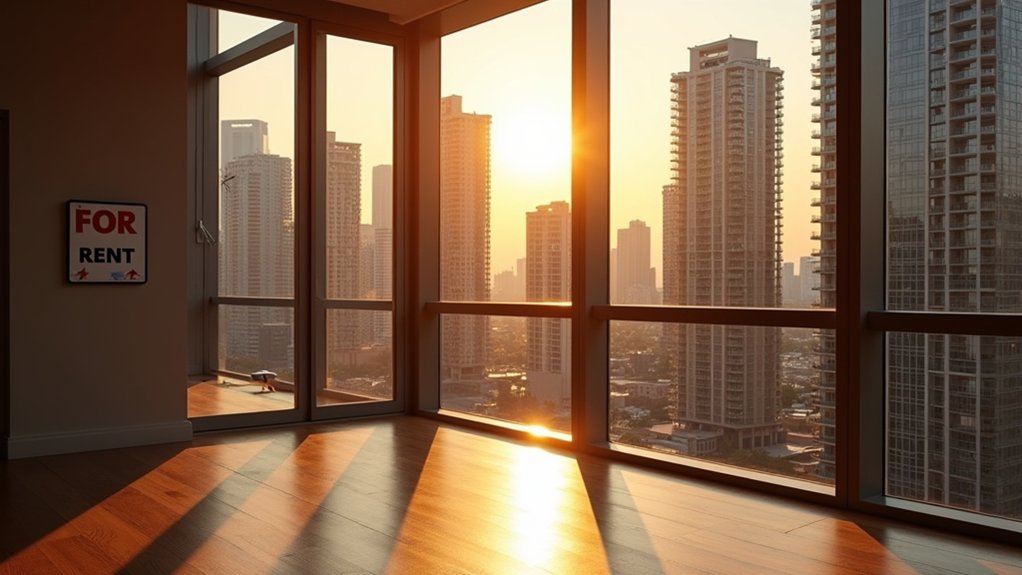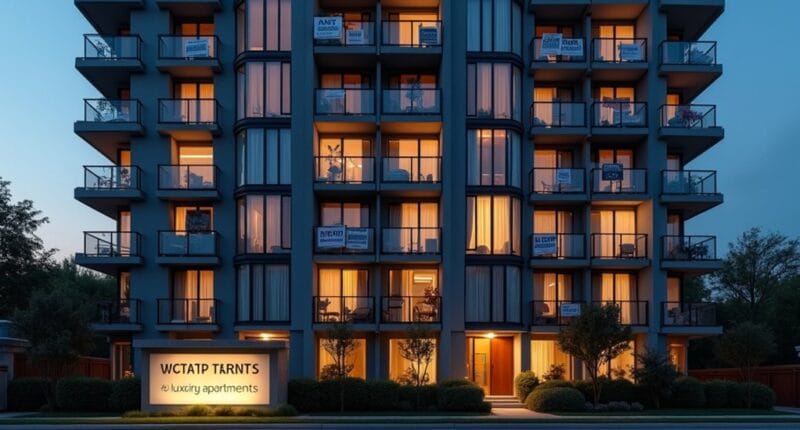Despite record vacancies, landlords aren’t budging on sky-high rents. A perfect storm of factors keeps prices up: population growth, remote workers flooding suburbs, and millennials stuck renting because they can’t afford homes. Add in slow construction, rising operating costs, and 17.2% of “vacant” units already pre-leased, and you’ve got a rental market that laughs in the face of supply-and-demand logic. The full story behind this pricing puzzle runs deeper.

While apartment buildings across the country show “For Rent” signs, tenants are still getting hammered with rising costs. It’s a bizarre situation – more vacancies should mean lower prices, right? Wrong. Welcome to the weird world of 2024 rental economics, where nothing makes sense anymore.
The numbers tell a frustrating story. Even with some units sitting empty, landlords aren’t budging on prices. Why? Because they can. Population growth and people getting priced out of buying homes means there’s always another desperate renter waiting in line. Those “vacant” units? Many are already pre-leased, just waiting for move-in day. In fact, 17.2 percent of vacant units are already rented but just waiting for occupancy.
Empty units don’t mean lower prices when landlords know desperate renters are lining up, priced out of homeownership and needing shelter.
It’s like a game of musical chairs, except the music never stops. Remote workers are flooding suburban markets. Millennials and Gen Z can’t afford down payments on homes. Even retirees are selling their houses and joining the rental rat race. With rents up 33.9% since pre-pandemic levels, the situation keeps getting worse.
Meanwhile, construction of new apartments crawls along at a snail’s pace, thanks to expensive materials and labor shortages.
The real kicker? Operating costs are soaring. Property taxes, insurance premiums, maintenance costs – they’re all up. And guess who’s footing the bill? Yep, the tenants. Landlords are also making up for those pandemic-era rental freezes and discounts. Payback time, apparently.
Here’s the cruel irony: higher interest rates are keeping potential homebuyers stuck in rentals longer than planned. More renters equal more demand, and more demand means landlords can keep pushing those prices up.
Even when they build new units, developers focus on luxury apartments because that’s where the profit margins are. Sorry, budget-conscious renters.
The math is simple but brutal. Population keeps growing, construction can’t keep up, and fewer people can afford to buy homes. Throw in inflation and rising operating costs, and you’ve got a perfect storm for sky-high rents.
Those “For Rent” signs might be multiplying, but don’t expect any bargains anytime soon. The rental market’s new normal is anything but normal.




